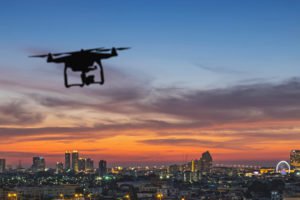Extracting forensic proof from a rogue drone simply acquired simpler.
On Thursday, Swedish cellular forensics firm MSAB introduced a partnership with URSA to develop the enterprise of drone forensics – gathering and analyzing telemetry and knowledge from a captured drone engaged in unauthorized actions.
URSA’s Idetic Unmanned instruments supplies – in response to a press launch “the most accurate understanding of drone telemetry data and metadata to support academic, law enforcement, insurance, and intelligence investigations in the rapidly evolving unmanned vehicle and robotics ecosystem.”
MSAB’s Mobile Forensic Ecosystem empowers police to quickly collect knowledge from cellular units, together with drones. Two keystone MSAB merchandise — XRY and XAMN — allow customers to extract knowledge from cellular units and serves as an analytical instrument for visualizing, looking and analyzing that knowledge.
XRY now helps extraction of information from quite a few standard drone fashions, permitting investigators to see flight path knowledge and different knowledge that may help their investigations and enforcement actions involving unlawful drones.
“The use of drones for illegal activities has grown tremendously over the last several years,” stated Joel Bollö, MSAB CEO. “From smuggling contraband into prisons to flying drugs across international borders, criminal enterprises are becoming more sophisticated and adept in their use of this technology. Our partnership with URSA will provide law enforcement with the tools they need to combat these growing incidents.”
URSA’s forensic providers are being utilized by the Federal Aviation Administration, Customs and Border Protection and several other American native and state regulation enforcement businesses.
According to a case examine co-authored by David Kovar, CTO and co-founder of URSA, and Bollö, most drone fashions can present at minimal the next knowledge upon seize:
- Serial variety of the plane and a few elements;
- Version numbers for crucial firmware;
- State change info reminiscent of launch/land, handbook/waypoint operation, GPS
- accessible or unavailable;
- Geo-location info for crucial areas – launch, land, and residential level;
- Flight observe info.
“Many law enforcement agencies are not aware of the volume and value of data present on drones and on the supporting devices, so greater awareness is needed,” the article notes.
 Unmanned Aerial Vehicle The latest drone news
Unmanned Aerial Vehicle The latest drone news




